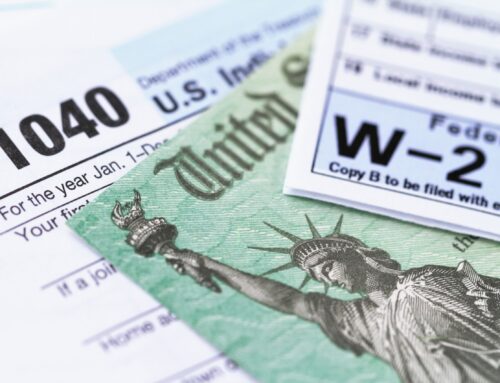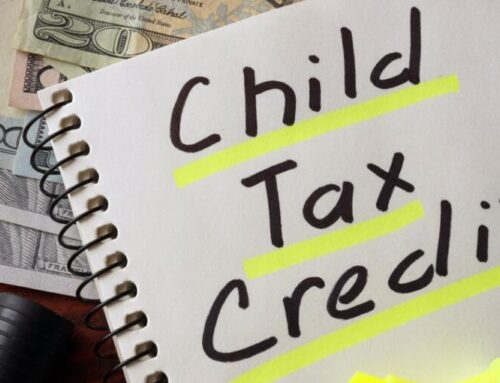Letter 6419. If you received advance payments for the 2021 Child Tax Credit Payments, the IRS has mailed you Letter 6419 that tells you the total amount of advance payments sent to you in 2021. We will refer to this important letter as we prepare your 2021 tax return, to claim your remaining CTC.
What is the Child Tax Credit (CTC)?
The Child Tax Credit (CTC) helps offset the costs of raising kids. Nearly every family is eligible to receive the 2021 CTC this year, including families that haven’t filed a tax return and families that don’t have recent income. Each qualifying household is eligible to receive up to $3,600 for each child under 6, and $3,000 for each child between 6 and 17. The credit is not a loan. Families can receive half of their new credit between July and December 2021 and the remaining half in 2022 when they file a tax return.
What is new about the CTC in 2021?
The 2021 CTC is different than before in 6 ways:
- Increases the tax credit amount. The tax credit’s maximum amount is $3,000 per child and $3,600 for children under 6.
- Makes the credit fully refundable. Even if you don’t owe taxes, you could get the full CTC refund.
- Removes the minimum income requirement. You can have zero income and still claim the CTC.
- Raises the qualifying age. Children 17 and under can qualify for the credit.
- Provides advance payments.If you already qualify for the current CTC when you filed your 2020 tax return (which you file in 2021), you can start receiving part of the new credit during 2021. You don’t have to wait until you file your 2021 tax return (which you file in 2022). The IRS will send you monthly payments for half your new credit between July and December 2021.
- Lowers the phase out rate. The CTC amount will start to gradually decrease starting at $75,000 ($150,000 for married couples and $112,500 for head of household). This is a temporary one-year expansion of the CTC for your 2021 tax return (which you file in 2022).
Am I eligible for the 2021 Child Tax Credit?
There are three main criteria to claim the 2021 CTC:
- Income: There is no minimum income requirement to claim the new CTC. However, the CTC will start to decrease when you make $75,000 if single ($150,000 for married couples and $112,500 for heads of households). Each $1,000 of income above the phase-out level reduces your CTC amount by $50.
- Taxpayer Identification Number: You and your spouse need to have an SSN or an Individual Taxpayer Identification Number (ITIN).
- Qualifying Child: Children claimed for the CTC must be “qualifying children.”
To claim children for the CTC, they must pass the following “qualifying child” tests:
- Relationship: The child must be your child, grandchild, stepchild or adopted child; younger sibling, stepsibling, half-sibling, or their descendent; or a foster child placed with you by a government agency. Note: if you are the child’s legal guardian, that is considered a child placed with you by a government agency.
- Age: The child must be 17 or under on December 31, 2021.
- Residency: The child must live with you in the U.S. for more than half the year. Time living together doesn’t have to be consecutive. There is an exception for non-custodial parents who are permitted by the custodial parent to claim the child as a dependent (a waiver formsigned by the custodial parent is required).
- Taxpayer Identification Number: Children claimed for the CTC must have a valid social security number (SSN).
- Support: The child does not provide more than half of their own support in 2021.
- Dependency: The child must be considered a dependent for tax filing purposes.
Note: If you are separated or divorced, you and your (former) spouse can’t claim different tax credits for the same child. For example, if you take turns claiming a child on a tax return, and you claim a child for the CTC this year, you will also have to claim that child for the Earned Income Tax Credit (EITC) this year, if you are eligible.
What if I get government benefits? Will these payments count against eligibility?
Tax credit refunds, including the CTC, don’t count as income against federally funded benefit programs like SNAP, TANF, Medicaid, or the housing choice voucher program (Section 8).
Do advance payments count as income? Do I need to report it on my tax return?
No. Advance payments are not income and do not need to be reported as income on your tax return. These payments are early payments of your 2021 Child Tax Credit, which you would normally claim as part of your tax refund when you file your tax return.
Even though the advance payments don’t need to be reported on your tax return, in January 2022, the IRS will send you Letter 6419 that tells you the total amount of advance payments sent to you in 2021. Please keep this letter for your tax records. On your 2021 tax return (which you file in 2022), you will need to refer to this notice to claim your remaining CTC.
Do I need a Social Security Number (SSN) to get the 2021 Child Tax Credit and advance payments?
You (and your spouse if you are married, filing jointly) can have either a Social Security Number (SSN) or Individual Taxpayer Identification Number (ITIN) to get the CTC and advance payments. Children you claim for the CTC must have valid SSNs.
Can my advance payments be reduced if I owe child support payments, back taxes, federal or state debt, or money to creditors or debt collectors?
No. The IRS will not reduce or offset your advance payments to pay past-due child support, back taxes, and federal or state debts. However, they are not protected from garnishment by creditors and debt collectors.
When you file your tax return and receive the rest of your CTC as part of your tax refund, it can be reduced to pay past-due child support payments, back taxes, Federal or state debts, and garnishment by creditors and debt collectors.
How much will my 2021 Child Tax Credit amount decrease by if I have a higher income?
The 2021 CTC will be reduced in two steps:
- The CTC will be reduced to $2,000 per child: It will reduce by $50 for each $1,000 that you are above the income threshold ($75,000 for single filers, $150,000 for married couples, and $112,500 for heads of households) until the CTC reaches $2,000.
- The CTC will be reduced againto below $2,000 per child: It will reduce by $50 for each $1,000 that you are above the income threshold ($200,000 for single filers and heads of households and $400,000 for married couples) until the CTC reaches $0.
How much money will I get from the 2021 Child Tax Credit? When will I get the payments?
The 2021 CTC is worth up to $3,600 for children under six and up to $3,000 for children ages 6 to 17. Half the credit will be delivered through monthly payments in 2021. You can get the remaining half when you file a tax return in 2022.
Example: Catlin has a 12-year-old daughter and 3-year-old son and earned $12,000 in 2020. When he filed his 2020 tax return (which you file in 2021), he claimed the current CTC and received a total of $1,425 in 2021. Because of the new rule changes to the CTC, when he files his 2021 tax return (which you file in 2022), his CTC will be worth $6,600. Through the advance payments, he will start receiving half of his new credit in 2021 ($3,300) in monthly payments from the IRS between July and December 2021. He will claim the remaining amount when he files his tax return in 2022.
Why would I have wanted to opt out of CTC advance payments?
Advance payments allow you to receive half of your CTC through monthly payments sent from July to December 2021. If you opt out of advance payments, you are choosing to receive your full Child Tax Credit ($3,600 per child under age 6 and $3,000 per child age 6 to 17) when you file your 2021 tax return (which you file in 2022). Here are some reasons why you may want to unenroll from getting CTC advance payments:
- Changes to your household: Advance payments are based on your 2019 or 2020 tax return. If you claimed a child on your 2019 or 2020 tax return and that child no longer lives with you in 2021, you are no longer eligible for the CTC and advance payments for that child. There is an exception if the other parent agrees to allow you to get the advance payments and CTC (a waiver form signed by the custodial parent is required).
- Changes to your income: You qualify for the CTC advance payments based on your income on your 2019 or 2020 tax return.
- Prefer one large payment: You would rather receive your CTC in one payment when you file your 2021 tax return (which your file in 2022).
- Changes to your payment information: Your mailing address has changed since you filed your 2019 or 2020 tax return, which means the IRS will send advance payments to the wrong address.
While you may be concerned about repaying back your CTC advance payments, Congress has enacted repayment protection for families with lower incomes if the IRS overpays you. Depending on your income, you may not have to pay anything back.
In addition, if you are married filing jointly, remember that your spouse also needs to unenroll if your household does not want to receive any advance payments. If your spouse does not unenroll, your spouse will still get half of the joint advance payments.
What if I share custody of my child? Who will get to claim the 2021 Child Tax Credit and advance payments?
Only one person — whoever lives with the child for more than half the year — can claim the CTC. If you claimed your child on your 2020 tax return (or 2019 return if you haven’t filed your 2020 tax return), starting in July 2021 you should have automatically begun receiving half of the new CTC through advance payments. You will receive the rest of the CTC when you file a 2021 tax return in 2022.
What if my advance payments are based on my 2019 tax return and I recently filed my 2020 tax return with changes? Will the IRS update the amounts of my advance payments?
Yes. As soon as the IRS processes your 2020 tax return, the amount of your advance payments will be adjusted if there are changes to your income, number of qualifying children, or filing status.
Because of the IRS delay on processing tax returns, your advance payments may not be adjusted in time. For example, if you added a new child on your 2020 tax return but the return hasn’t been processed, that child hasn’t been included in your advance payments. To resolve this issue, file your 2021 tax return (which you file in 2022) to get the money that you are owed.
What if I receive more money than I should as part of the advance payments for the 2021 Child Tax Credit?
Congress enacted a repayment protection for families with lower incomes if the IRS overpays you. If your 2021 income is less than $40,000 ($60,000 for married couples and $50,000 for heads of households), you are not required to repay anything back.
This protection only applies if you are overpaid because there are changes to the number of children you claim, not changes in income. The protection amount gradually decreases as your income increases. If your 2021 income is $80,000 or above ($120,000 for married couples and $100,000 for heads of households), you are required to repay the full excess amount.
If you earn more than the protection allows and receive more money than you should through advance payments in 2021, the IRS may require you to pay back the excess amount when you file your 2021 tax return (which you file in 2022). This means that you will either owe more taxes or see a decrease in your tax refund.
An example is if you received advanced payments for a child who lived with you in 2020 but moved in March 2021. Once you file taxes in 2022 (for Tax Year 2021), you will have to pay the money back if your income is over $40,000 (single), $60,000 (married filing jointly), or $50,000 (head of household).





